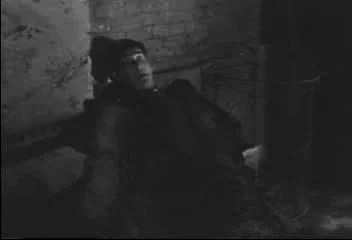It's been an exciting though disappointing week in the world of space exploits. Here is a summary of what you've missed if you haven't been following the papers:
DISCOVERER 2 SOARS INTO ORBIT; LAYS EGG NO ONE CAN FIND

The Air Force launched another Discoverer on April 13. After 17 orbits, the satellite ejected a capsule for recovery. The landing spot was supposed to be around Hawai'i, but a task force of ships and aircraft were unable to find the capsule. Now, there wasn't anything on board this one, but later shots are supposed to carry biological specimens. And maybe film for developing. Oops! Did I say that out loud?
In any event, no one knows where it landed. Since Discoverer is in a polar orbit (and still otherwise functioning, to all reports), I suppose the capsule could have fallen anywhere along its trajectory. If the capsule was ejected too early, it would have hit Antarctica or the South Pacific. If late, the track crosses Alaska, the Arctic ocean, and down through Scandinavia, the Eastern Bloc nations, and all along central Africa.
Assuming the latter, its destination could be somewhere in the ice, perhaps a communist station, or next to some frightened zebra. We may never know.
VANGUARD IS ANOTHER FLOPNIK


The Navy boys tried to launch a sequel to the orbiting but unsuccessful Vanguard 2. This shot was a two-fer–atop the slim rocket was not only a 10kg ball with a new magnetometer on board (for mapping magnetic fields) but a balloon for tracking air density.
Sadly, the rocket only got up a hundred miles before falling back to Earth. It's a shame–Von Braun's team is having success after success, but the Vanguard program is stuck in first gear. Let's hope they can get Vanguard 3 up before the year's end!
MAIDEN LAUNCH FOR NEW ATLAS A BUST

The Atlas is America's first Intercontinental Ballistic Missile (ICBM). It is being manufactured just a dozen miles from my house at Convair's Kearny Mesa plant. The first incarnation of the Atlas was test-launched in 1957 with a dummy warhead. Since then, Atlases have been launched with some regularity from Cape Canaveral, including the December launch of SCORE, which went on the improved Atlas B. The Atlas C was the last of the prototypes, and it may be used this year for an upcoming Venusian mission.
But the Atlas launched on April 14 was an Atlas D, a more-powerful version designed to be the first operational ICBM, the one they'll bury underground in protective silos to be turned loose on the Soviet Union on a moment's notice.
Eventually. The one launched last Tuesday malfunctioned right out of the gate, one of its three engines blasting at reduced capacity. It limped along for 20 seconds, burst into flames, and was destroyed 17 seconds later by ground control. And this is the booster that the Mercury astronauts will ride into orbit. Brave men they!
So, as they say, "All the news that fits, we print!" See you in two days!
(Confused? Click here for an explanation as to what's really going on)
This entry was originally posted at Dreamwidth, where it has comments. Please comment here or there.
























